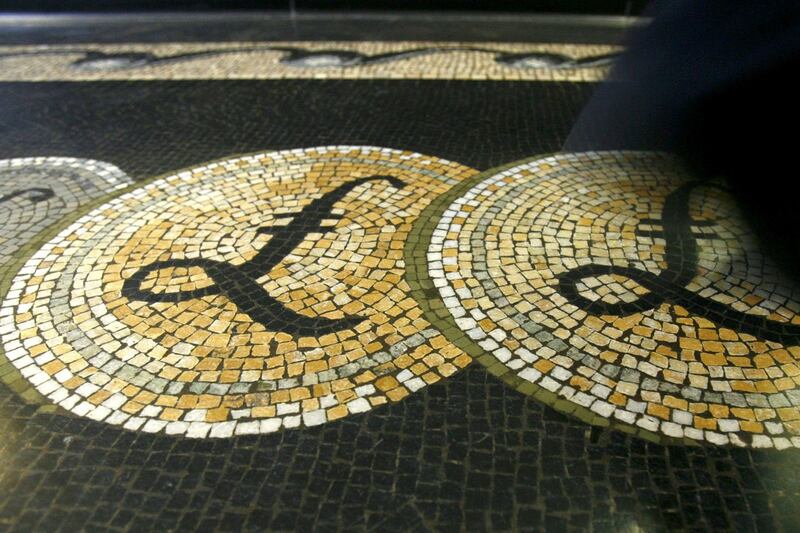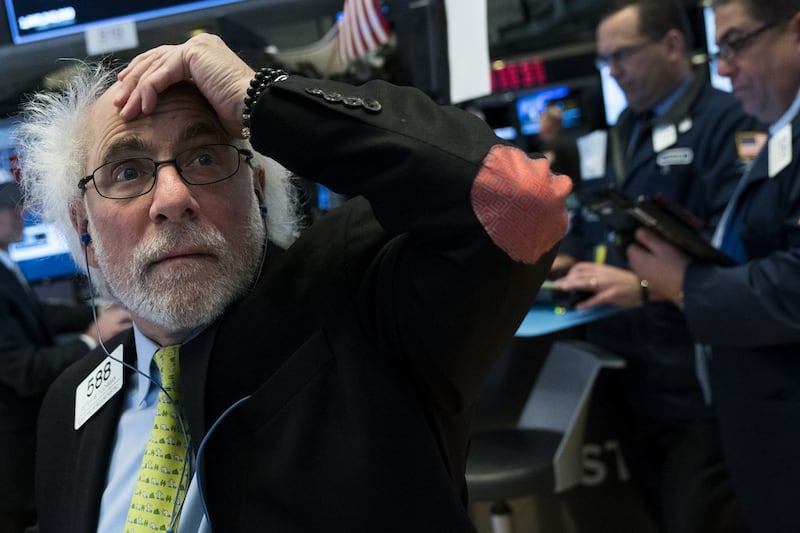British politics is in turmoil and the outcome of Brexit remains hugely uncertain. Yet in the last couple of weeks sterling has rallied strongly on the markets and is now at around 87p against the euro.
Investors seem to be ignoring the risks of a no-deal crash and the resulting damage to the UK economy and have been buying into sterling in the last short while. Why?
1. What has happened?
Sterling has rallied on the markets and is largely taking its cue from events in the House of Commons.
As it became clear the majority of MPs are against a no-deal Brexit, the currency started to rise.
The latest hints from the British Labour party, that it may back a motion seeking to rule out a no-deal exit, gave the currency another push on Wednesday and into Thursday.
Taking a longer view, the rise in sterling has been remarkable since its last weak point, which was around when British prime minister Theresa May cancelled the first Brexit vote in mid-December.
Since then it has risen from around $1.25 against the US dollar to over $1.30 on Thursday.
The market is made up of people trading currencies with different mindsets and time horizons.
Against the euro, sterling was regularly above 90p sterling against the single currency in December, but was trading under 87p early on Thursday.
Sterling took another jump on Thursday after strong UK jobs data, which showed unemployment at its lowest levels since the 1970s.
Currency forecasting is a hugely dangerous game. It requires judgements on both economies involved - for example the current moves in the euro versus sterling rate are also driven by signs of weakness in the euro economy. Brexit is not the only factor.
The market is made up of people trading currencies with different mindsets and time horizons. Long-term moves are generally driven by what is called “real money,” long-term investors buying or selling UK assets, for example, determine where sterling goes.
However, in the short-term traders with a much shorter time-horizon, such as hedge funds and others who trade actively in currency markets, can dominate the market by placing large bets on which way a currency will move.
The extent of these bets, and the fact that computer programmes now dominate a lot of trading based on parameters set by people making them, can make currency markets very volatile.
So for consumers and small businesses, caution is the central consideration in sterling dealings.
Small businesses with sterling exposures have been advised to hedge their dealings as far as possible and this remains good advice.
For those in the Republic, perhaps thinking of buying a car in the North, or going on a shopping trip, sterling swings make this a tricky call.
On that basis, is now a good time to make that big sterling purchase?
Well, there will certainly be better value if a no-deal Brexit becomes more likely but if, for example, a second referendum is called, sterling could quickly head higher.
Bank of Ireland Global Markets, in a note to clients, said this "saw investors enticed by the fundamental value inherent in sterling - should political risks be removed."

2. Why has this happened?
Investors are taking the “glass half full” approach to Brexit. Sterling had generally been on a weakening trend since the referendum in June 2016.
in the last few weeks, markets have chosen to take a positive view based on the view the House of Commons does not support a no-deal Brexit
Remember, before the referendum the euro was trading in the mid-70p range against the euro and had been generally below 80p for the previous two years.
It lost ground in the wake of the referendum and has swung - sometimes violently - since, as the Brexit story has unfolded.
But the trend has been down.
However, in the last couple of weeks, markets have chosen to take a positive view of the outcome to the latest Brexit uncertainty, based, it seems, largely on the view that the House of Commons does not support a no-deal Brexit.
This view ignores the risk that if UK politics can’t come up with a route towards Brexit that it wants to take - and get EU agreement - then a no-deal exit is the default option.
Remember, too, that to extend Article 50 and delay the UK’s exit beyond March 29th requires all EU member states to agree.
And unless UK politics can come up with a way forward - a clear reason to extend the exit date - they may be loath to do so.
France’s finance minister Bruno Le Maire said on Thursday if the UK wants to extend Article 50, then the rest of Europe has to understand why.
Sterling weakness since the referendum has led to the currency trading at unusual lows for a prolonged period
For the moment, investors are betting a way will be found to avoid a no-deal and are positioning themselves for a possible recovery in sterling.
The background is the sterling weakness since the referendum has led to the currency trading at unusual lows for a prolonged period.
Investors took out big bets that the currency would fall - shorting it, in market jargon - and many have been paring back these bets, fearing that they could get caught out if some kind of deal is reached and the currency rallies.
Reuters this week quoted data from a number of major international banks showing that short sterling positions have been sharply cut - the usual international data on this is not available because of the US government shutdown.
While judging where a currency “should” trade relating to economic fundamentals is difficult, by historical standards sterling has been at a low level now for a prolonged time.
In 2018, on average against a basket of currencies, sterling fell 7 per cent. ECB data shows between 2010 and the Brexit vote, the average rate against the euro was 81.7p and in August 2015 the rate actually dipped under 70p.
Against the US dollar, UBS, the investment bank, reckons sterling could rise to $1.40 by the end of this year to better reflect the fundaments of the UK economy and some other major players predict it could be even higher.
But all agree this is completely dependent on the Brexit outcome.
3. What happens next ?
The next key marker is Tuesday January 29th when the House of Commons is due to next vote on the Brexit withdrawal agreement and debate and vote on a range of proposed amendments, with some of the key ones designed to try to stop a no-deal exit.
Anything from a no-deal exit to a second referendum is still possible
However, we still do not know when clarity will emerge about what course the UK parliament wants to take and what the EU response will be.
The situation remains fluid and unpredictable with anything from a no-deal exit at one end of the spectrum to a second referendum at the other end still possible.
Remember, too, that a delay in Article 50 could remove the immediate uncertainty, but may set up another deadline with no clarify on what will happen.
All this uncertainty has left analysts nervous.
While in the last week or so traders have been looking for an excuse to buy sterling and unwind their negative bets, there is a remarkable underlying level of uncertainty, reflecting what is happening in UK politics and warnings about the impact of a no-deal exit.
Bank of Ireland global markets warns “the cloud of uncertainty surrounding the political future of the UK remains” and with it comes significant downside risks for sterling.
Next week’s House of Commons votes could be “a pivotal moment”, it says, if it pushes the balance of probabilities away from a no-deal.
Investec takes a similar view, saying next week's debate could "eliminate many of the most pressing fears".
It warns clients the current sterling strength “may be overdone as we feel much of the relief is predicated on the expectation than an extension, or amendments to the Withdrawal Agreement will be granted by the EU without opposition or conditions attached.”
Ulster Bank says the recent moves highlight the “potentially sizeable further upside for sterling in the event that a constructive resolution is eventually found.”
However, political uncertainty still leaves significant risks and points to ongoing volatility, it said in a note.
In the event of a no-deal Brexit, sterling would certainly take a heavy fall - UBS has said it could drop to parity against the euro and below $1.20 against the US dollar. Just because it has been low for a long time, in other words, does not mean sterling cannot go lower.
The economic impact of the currency’s swings can be significant – at least when they last. A weaker sterling has helped UK exports and hampered those from Ireland to the UK since the Brexit vote. So the recent revival in the UK currency comes as some short-term relief to Irish exporters. But they won’t be counting any chickens yet.
***************
The bottom line is what we have learned from recent trends is that there is pent-up demand for the currency from investors, in the event of Brexit going relatively smoothly, or a no-deal buying avoided.
It is all down to the politics and next week is the next key marker.
Remember, however, that even a negotiated Brexit will cost the UK economy and leave significant long-term uncertainties.
With a damaging no-deal exit is not off the table there is still the potential for a sudden sterling shock. As the best political and financial brains struggle to work out what happens next - given the range of possible outcomes - hedging bets seems the only sensible approach.














